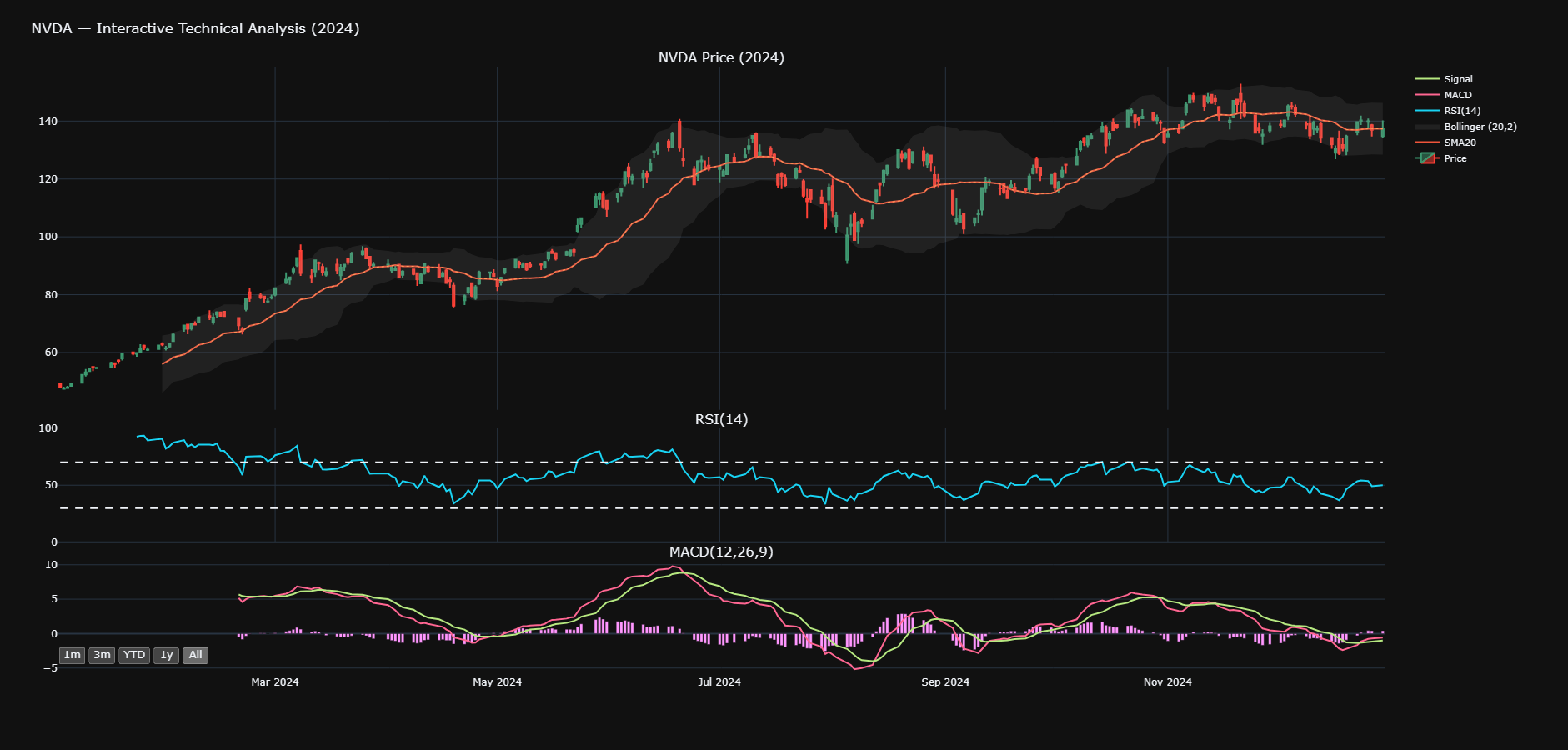NVDA 2024 — Interactive Technical Analysis
🔍 One of the major goals of market analysis is to understand how prices move and how trends/cycles emerge over time.
But explaining these dynamics is tricky—even for practitioners. As any trader will tell you: sometimes, explaining risk management to a newcomer is harder than placing the trades themselves! 😅
👉 Launch the Interactive App ▶
📉 The Reality Behind Price Action
Markets don’t move in straight lines. They trend, consolidate, and revert—these are the rhythms of price cycles.
Understanding these movements helps to:
- anticipate momentum shifts,
- design robust trading/hedging rules, and
- make more informed portfolio decisions.
I illustrated this by analyzing NVIDIA (NVDA) in 2024 using classic technical indicators:
- SMA20 (short-term trend)
- Bollinger Bands (20,2) (volatility envelope)
- RSI(14) (momentum)
- MACD(12,26,9) (trend/momentum crossover)
📊 Visualization

Legend:
- Candlesticks: Daily price
- SMA20: Moving average (trend)
- Bollinger (20,2): Upper/Lower volatility bands + midline
- RSI(14): Overbought/oversold gauge
- MACD(12,26,9): MACD line, signal line, and histogram
🧰 Methodology & Data
- Period: 2024-01-01 → 2024-12-31
- Data source: Yahoo Finance via
yfinance - Indicators: SMA20, Bollinger(20,2), RSI(14), MACD(12,26,9)
- Tools used: Python (
pandas,plotly,talib)
🧠 Why It Matters
Whether in cooking, medicine, or markets—precision matters.
- In cooking: a wrong dose can ruin the dish.
- In medicine: a milligram too much can have serious consequences.
- In trading: misreading a signal or reacting late can deepen drawdowns or miss opportunities.
📚 Suggested Readings
- Murphy, J. (1999) — Technical Analysis of the Financial Markets
- Elder, A. (2014) — The New Trading for a Living
🏷️ Tags
#NVDA, #TechnicalAnalysis, #BollingerBands, #RSI, #MACD, #SMA, #Plotly, #Python, #yfinance
